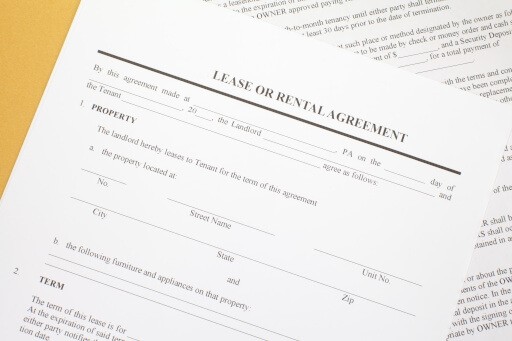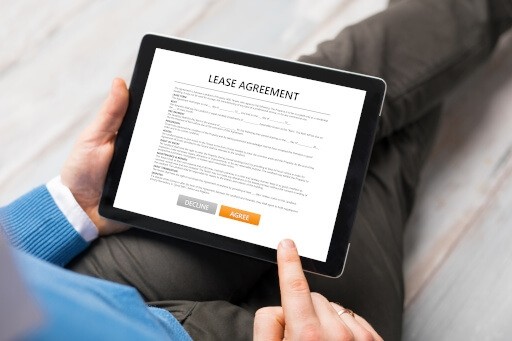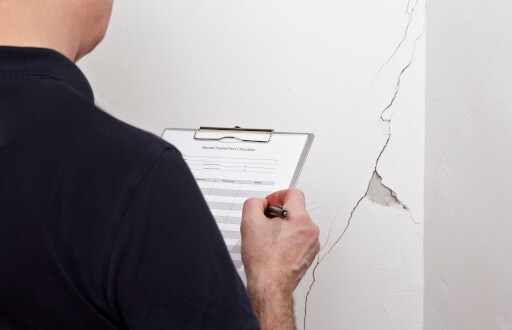
It’s no secret that most pet owners treat their pets like family, so when it comes time to find a new home, these renters will be looking for pet-friendly rentals. This begs the question, should you allow pets in your rental property? If this question is weighing on your mind, you’re in the right place. It’s true that allowing pets in your rental gives you access to a larger pool of interested renters, but this decision also comes with a few risks. Before you decide where your rental fits in the mix, let’s weigh the benefits and risks of having a pet-friendly rental.
- Benefits of allowing pets in your rental property
- Risks of allowing pets in your rental property
- Additional considerations for allowing pets in your rental
- The choice is yours
Benefits of Allowing Pets in Your Rental Property
If you decide to list your rental online as “pet friendly,” you’ll enjoy several benefits, including the opportunity to:
1. Make more in rental fees
By allowing pets in your rental property, you are essentially adding another tenant (or a few, if you allow). Although this furry tenant won’t be responsible for splitting the rent, their presence will require some additional payments. Pet fees, pet deposits, and pet rent are a few of the ways you can make more in rental fees by allowing pets.
You will collect a non-refundable pet fee from your pet-owning tenant before or on move-in day. You can also collect a pet deposit for the rental at the same time in addition to the pet fee. The only difference is the pet deposit is refundable and will be returned to the tenant in full if there are no pet-related damages to the unit, including soiled carpet, chewed blinds, or scratches on the floor, walls, and moldings. Pet rent is a fee that renters will pay once a month in addition to their base rent.
Depending on your state laws, you can charge one of these rental fees, all three, or a mix. These rental fees will automatically boost your rental income, as well as provide a bit of cushion for potential damages. Be sure to check what competitors in your market are charging for pet fees so that you aren’t under or overselling your rental.
2. Increase your lease renewal rates
Not every rental allows pets, so if you choose to allow them, your tenants may be incentivized to renew their lease. Many renters will feel more comfortable in a pet-friendly rental, even if they haven’t committed to a furry friend of their own just yet. It gives them the option to do so in the future. If your rental is not pet-friendly, and your tenant decides they want a pet, they will have to wait until their lease is up or potentially break their lease early, leaving you to find a new tenant once they’re gone. Avoid these potential vacancies by giving pet owners what they want — a good home for their fur family.
3. Expand your list of potential tenants
As discussed, not all rentals allow pets, which automatically limits those landlords to only renters without pets. If you choose not to allow pets in your rental, you risk losing some potentially great tenants simply because they are pet owners. According to a survey from the American Veterinary Medical Association, 45.5% of U.S. households own a dog and 32.1% own a cat. That is a lot of households with pets that you would be losing out on. Your list of potential tenants will expand immediately if you list your rental as pet friendly. As more and more renters become pet parents, your pool of potential tenants will continue to grow.
Risks of Allowing Pets in Your Rental Property
Allowing pets in your rental is a great way to show tenants your flexibility, but it’s important to consider the following risks before you proceed:
1. Increased chances of property damage
It’s common for pet damage to occur in pet-friendly apartments, even if it only involves minor issues. Soiled carpet, scratched floors and walls, and chewed blinds are just a few examples of common pet damage. Accidents happen, especially with younger pets, but if your tenant isn’t a responsible pet owner, small issues may become bigger problems over time. If a pet is continuously left home alone or not properly taken care of, damage will likely occur.
2. Potential noise complaints
Pets left alone for several hours at a time, even during normal work or school hours, can be a problem. Incessant barking, howling, or meowing can lead to frustrated neighbors and subsequent noise complaints. In some situations, pet owners may be trying their best to deal with a pet’s separation anxiety, while others may be unaware of the problem. Noise complaints are never ideal, especially when it’s about lonely, bored, or anxious pets. Handling pet noise complaints can prove to be difficult because there is not always a solution to the problem. Pets’ behavior may improve over time, but that’s not always the case.
3. Abandoned pets
Even worse than a howling pet left home alone is an abandoned pet. By allowing pets in your rental, you run the risk of having a tenant who not only abandons their lease and your unit, but their pet as well. If the pet is left alone for a lengthy period of time, there could be severe damage to your property. Dealing with an abandoned pet and potential damage to your property can be upsetting for both you and the pet. If this happens in your rental and you cannot get in touch with your tenant, call your local animal rescue. This will at least allow the pet to have a second chance for a good home.
Additional Considerations for Allowing Pets in Your Rental
Although benefits and risks are important to think about, there are other pressing issues to consider as well before making your final decision.
Does your insurance company cover all pet breeds?
Not every landlord will have an insurance policy that covers all pets. In fact, many insurance companies have restrictions on what animals and breeds they allow in the policy. For instance, pit bulls and rottweilers are two common dog breeds that are excluded. Before you sign a lease with a pet owner, be sure your policy covers their pet.
How to legally handle service and emotional support animals
Tenants who have service animals or emotional support animals are protected by the American Disabilities Act (ADA). Because of this, landlords are required to allow these animals in their rental whether their unit is pet-friendly or not. If your rental is pet-friendly, be aware that tenants with a service or emotional support animal are not legally required to pay pet fees, pet deposits, or pet rent. Before your tenant (or their pet) moves in, they are legally obligated under the ADA and Fair Housing Laws to provide you with proper documentation that details their need for the animal.
How to screen tenants with pets
When screening a pet-owning potential tenant, the process will be very similar to screening a tenant without pets. Your tenant screening should include a background and credit check (conveniently provided by TransUnion® if your rental is listed on Apartments.com), as well as professional and landlord references, proof of income, etc. The only additional requirements for pet owners would be to answer a list of questions, such as:
- How many pets do you have?
- What type of pet(s) do you have?
- What breed?
- How much does the pet weigh?
- Is your pet up to date on shots (specifically rabies)?
You also have the option to set up a pet interview with the potential tenant and their pup. By meeting their pet before move-in day, you can make sure they’re friendly and well behaved.
The Choice Is Yours
Every property owner must make their own decision when it comes to allowing pets in their rental property. Keep in mind that although there are serious risks, such as property damage, noise complaints, and abandoned pets, more and more renters are becoming pet owners. If you don’t allow pets, your pool of renters will continue to shrink. A great compromise is to create a pet agreement that outlines your requirements, including:
- Pet fees, pet deposits, and pet rent
- Number of pets allowed per unit
- Type, breed, and size of pet
In the agreement, you can also detail your expectations. For example, explain that tenants are required to pick up after pets outdoors, specify cleaning instructions to avoid any leftover pet dander, smell, or damage after your tenant moves out, and reiterate community quiet hours.
Although you are not required to allow pets in your rental property, you have a much better chance of finding a potentially great, long-term tenant in a timely manner if you are flexible with your rental policies and rent to tenants with pets.
Frequently Asked Questions
How do I make my rental pet friendly?
A great way to retain your pet-owning tenants is to install a few pet-friendly amenities and features. Pet-friendly flooring (avoid carpet), a closed-in patio or a fenced-in yard, or a pet door that opens to a fenced-in outdoor space are great ways to make your rental more pet friendly.
How much should I charge for pet fees?
If you choose to allow pets in your rental, any additional fees you require are up to you. Typically, pet-friendly landlords charge between $200-$500 for pet deposits, while others charge between $25-$100 a month in pet rent. Read up on local laws to see if your state limits the amount you can charge.
Should I allow pets in my rental?
The choice of allowing pets in your rental is up to you. There are many considerations to weigh. Even though there is the potential for damage and other issues, many people are becoming pet owners so you could attract more tenants.
Should I allow cats in my rental?
Cats are different animals than dogs, so allowing them in your rental comes with a different set of considerations. You must think about litter box odors, carpet destruction, and more. However, cats can also be quite easy tenants. Ultimately, you have to weigh the benefits and risks of having a cat in your rental.
This article was originally published on April 19, 2021.











